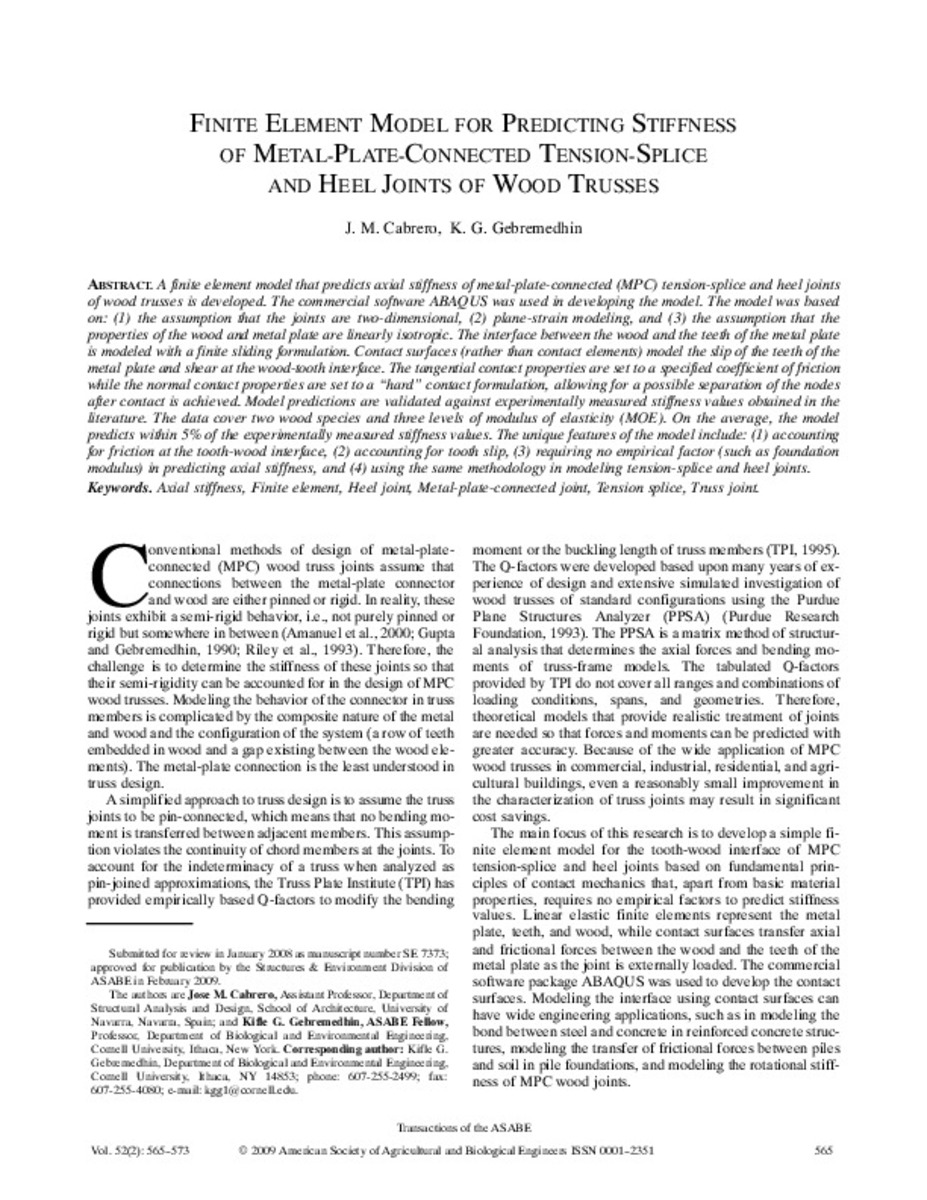Finite Element Model for Predicting Stiffness of Metal-Plate-Connected Tension-Splice and Heel Joints of Wood Trusses
Files in This Item:
Statistics and impact
Items in Dadun are protected by copyright, with all rights reserved, unless otherwise indicated.







